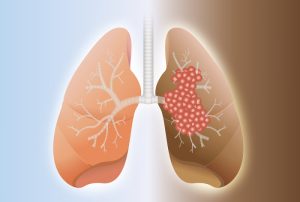by
Thomas Dworetzky, Contributing Reporter | March 02, 2017
FDG PET/CT has shown itself to be an effective imaging tool for assessing treatment in lung cancer patients, say researchers.
But they advise that its effectiveness, compared with more conventional imaging technologies, like chest CT, is still evolving.
“FDG PET/CT is most useful when there is clinical suspicion or other evidence for disease recurrence or metastases,” study coauthor Rathan M. Subramaniam, of the department of radiology at the University of Texas Southwestern Medical Center in Dallas, said in a statement, advising that “using FDG PET/CT for routine surveillance without any clinical suspicion should be discouraged until its value for patient survival outcomes is fully established.”



Ad Statistics
Times Displayed: 76903
Times Visited: 2661 Ampronix, a Top Master Distributor for Sony Medical, provides Sales, Service & Exchanges for Sony Surgical Displays, Printers, & More. Rely on Us for Expert Support Tailored to Your Needs. Email info@ampronix.com or Call 949-273-8000 for Premier Pricing.
While the National Comprehensive Cancer Network “recommends the use of FDG PET/CT for appropriately staging lung cancer and avoiding futile thoracotomies,” the authors noted, as well as to better plan radiation therapy for both non-small cell lung cancer and small cell lung cancer, it doesn't advise “routine use” to check responses to treatment and follow-up in lung cancer.
The researchers found that PET/CT is “usually recommended” 12 weeks post chemoradiation therapy, which reduces the chance of false positives from radiation-linked inflammation.
In situations where changes from radiation can last longer, an FDG PET/CT is usually advised in 3 months. When radiation isn't used, an FDG PET/CT can be done 4 weeks post-op or post chemotherapy.
Post-treatment follow-up typically includes a physical exam, lab tests, and imaging.
The authors described PET as an imaging modality that is promising in the evaluation of lung cancer and is currently used clinically for initial anti-tumor treatment strategy and for subsequent treatment strategy,” the authors concluded.
The authors reviewed the existing literature in their paper, titled “The Value of FDG PET/CT in Treatment Response Assessment, Follow-Up, and Surveillance of Lung Cancer,” which was published in the February issue of the
American Journal of Roentgenology.
Last year a study did find that PET/CT beat PET/MR for detecting and characterizing lung cancer.
University Duisburg-Essen researchers had 121 oncology patients, with 241 lung lesions in total, undergo an FDG PET/MR exam after an FDG PET/CT. The detection rates were calculated for MR, the PET component of PET/CT and the PET component of PET/MR in relation to the CT component of PET/CT,
according to an HCB News report at the time.
The researchers found that the detection rates were 66.8 percent, 42.7 percent and 42.3 percent, respectively. They also found that image quality was better for PET/CT than PET/MR.
For detecting and characterizing lung lesions that are 10 millimeters or larger, PET/MR and PET/CT perform comparably. But the overall detection rate of PET/MR is inferior to PET/CT because it’s not able to accurately detect lesions smaller than 10 millimeters. For example, staging thoracic cancer with PET/MR wouldn’t be a good idea because there is a risk that small lung metastases would be missed.
Lung cancer is still the world's top cancer killer, taking 1.6 million lives annually. Overall 5-year survival rate is just 17.4 percent – 54.8 percent when localized and 4.2 percent when the disease goes metastatic.

